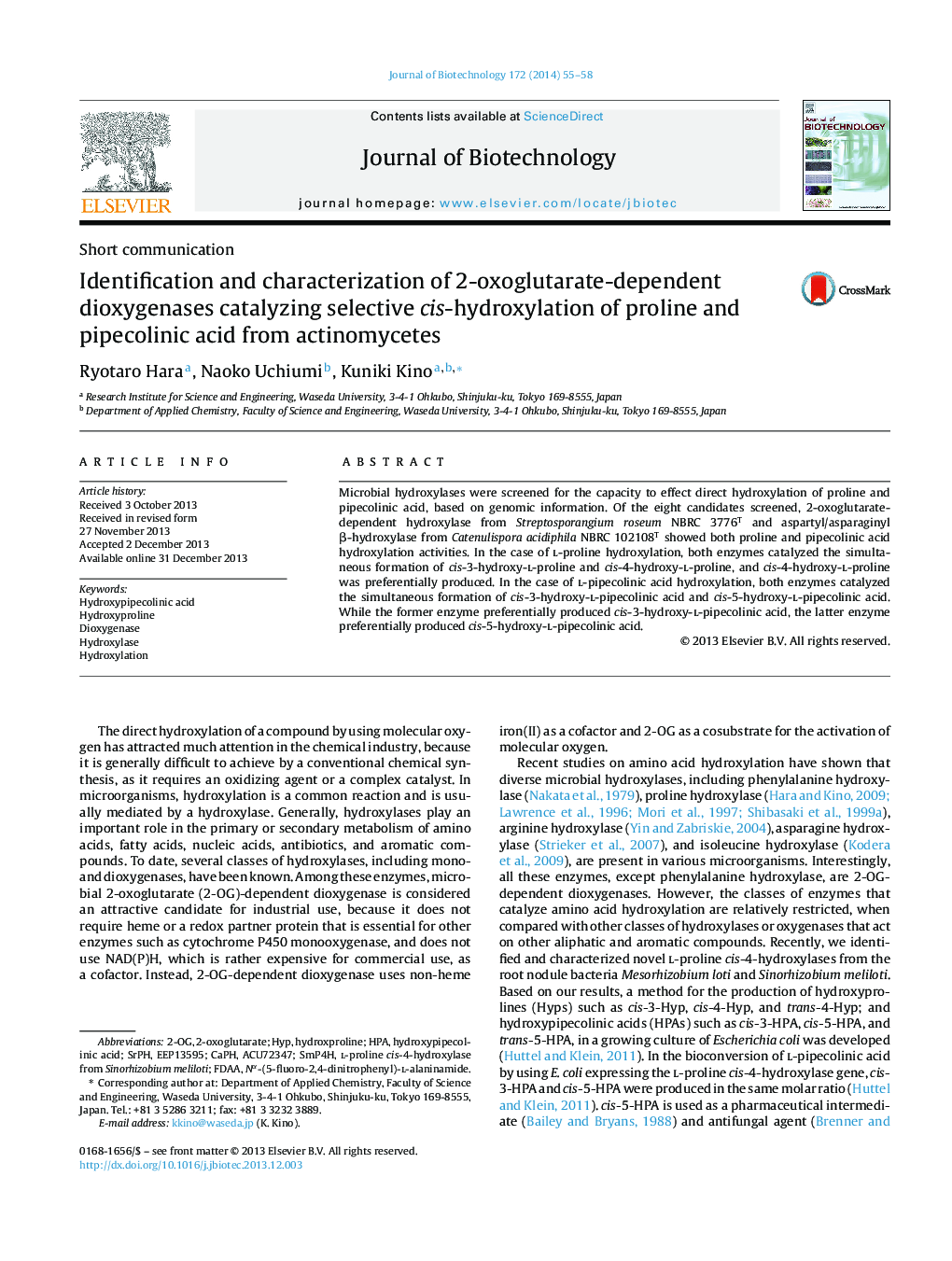| Article ID | Journal | Published Year | Pages | File Type |
|---|---|---|---|---|
| 6491646 | Journal of Biotechnology | 2014 | 4 Pages |
Abstract
Microbial hydroxylases were screened for the capacity to effect direct hydroxylation of proline and pipecolinic acid, based on genomic information. Of the eight candidates screened, 2-oxoglutarate-dependent hydroxylase from Streptosporangium roseum NBRC 3776T and aspartyl/asparaginyl β-hydroxylase from Catenulispora acidiphila NBRC 102108T showed both proline and pipecolinic acid hydroxylation activities. In the case of l-proline hydroxylation, both enzymes catalyzed the simultaneous formation of cis-3-hydroxy-l-proline and cis-4-hydroxy-l-proline, and cis-4-hydroxy-l-proline was preferentially produced. In the case of l-pipecolinic acid hydroxylation, both enzymes catalyzed the simultaneous formation of cis-3-hydroxy-l-pipecolinic acid and cis-5-hydroxy-l-pipecolinic acid. While the former enzyme preferentially produced cis-3-hydroxy-l-pipecolinic acid, the latter enzyme preferentially produced cis-5-hydroxy-l-pipecolinic acid.
Related Topics
Physical Sciences and Engineering
Chemical Engineering
Bioengineering
Authors
Ryotaro Hara, Naoko Uchiumi, Kuniki Kino,
